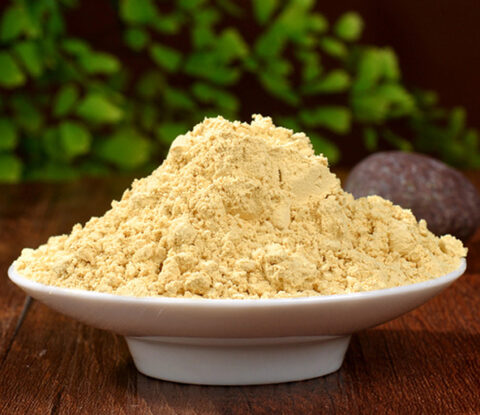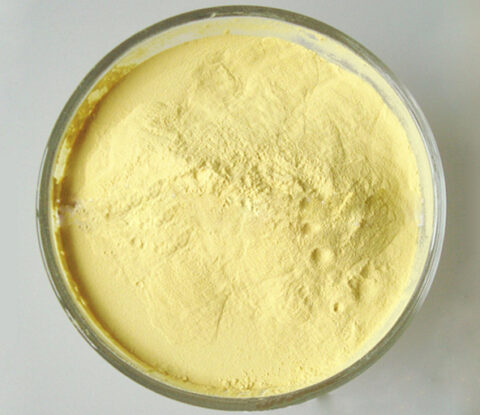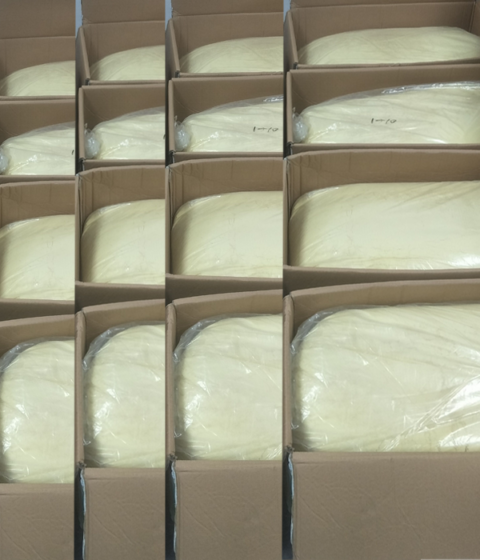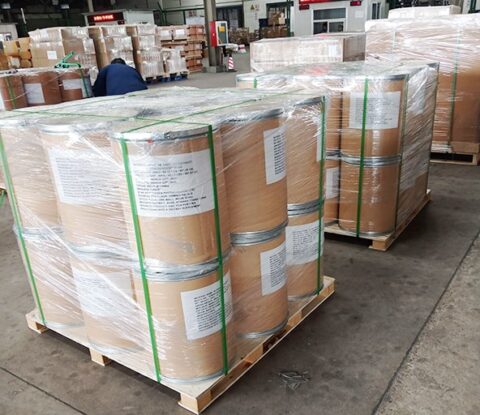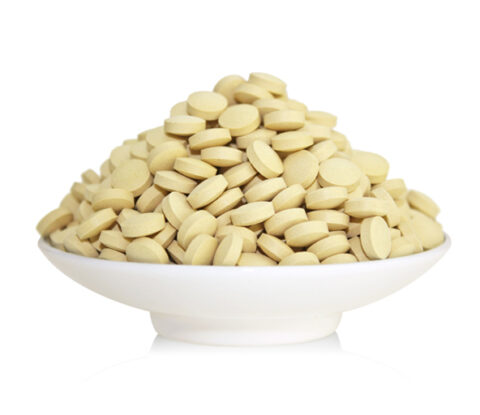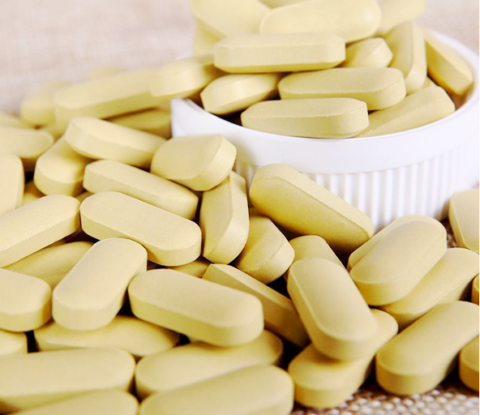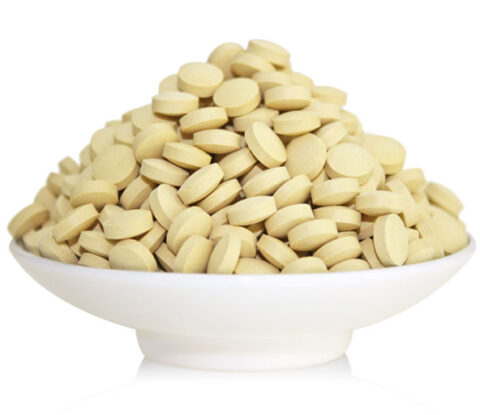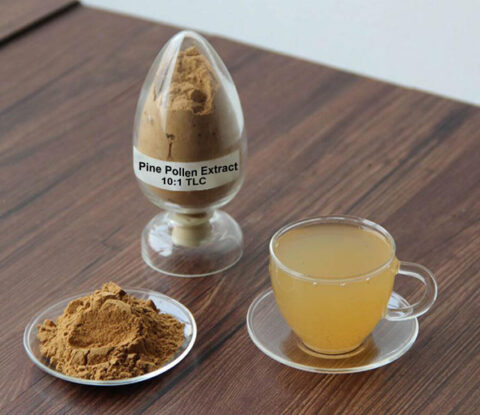
Pine Pollen Powder/Yunnan Pine Pollen Powder
Pine pollen powder tends to refer to pollen wild harvested for commercial use from the genus Pinus such as Pinus sylvestris or Pinus massoniana and other pine tree species. Recorded in the Chinese masterpiece “Shennong's Herbal Classic”, the earliest use could date back to the Han dynasty over 2,000 years ago. Nowadays pine pollen powder is still used in China and Korea as a food and health-care supplement.
Pine Pollen Powder/Yunnan pine pollen powder
Production Information
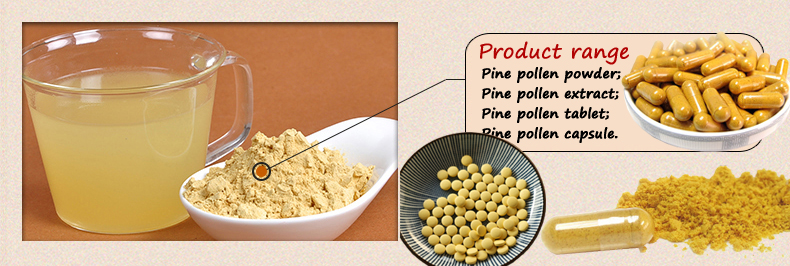 Other Names: Pine flower pollen, pollen pini, pine yellow, song hua fen
Other Names: Pine flower pollen, pollen pini, pine yellow, song hua fen
Plant Sources: Pine pollen mainly comes from pine family plants, including Pinus massoniana and Pinus tabuliformis. Pine pollen is the dried pollen of these plants, usually harvested in the spring time from April to May when the flowers first bloom, dried and collected to remove impurities and obtain a dry powder.
Origins: The main origins of our pine pollen is in Yunnan Province, high mountain areas with an altitude of 1500-3500 meters, including cities and regions such as Tengchong city, Chuxiong city, Dali Autonomous Prefecture, Lijiang city, Pu’er City, and Shangri La Plateau.
Specification:
Cell cracked ratio/shell-broken ratio>98%, protein>10%, 250 mesh size
Moisture content<7%
Ash<8%
Arsenic (As): NMT 1ppm
Cadmium(Cd): NMT 1ppm
Lead (Pb): NMT 3ppm
Pesticides Residues: NMT 1ppm
Total Plate Count<1000cfu/g
Yeast & Mould <100cfu/g
Salmonella: Negative
E.Coli: Negative
Appearance: Light yellow fine powder, no visible impurities to the naked eye;
After breaking the cell wall, the powder becomes fluffy, and there will be slight clumping/caking during long-distance transportation or storage when compressed tightly.
Production Process: Natural sun drying (moisture<7%) —- screening of raw materials by testing the heavy metals —- breaking the cell wall —- passing through a 200 mesh sieve —- testing physical and chemical indicators —- packing and storing in warehouse
Main Nutritional Components: Pine pollen contains 9%-16% protein and a total amino acid content of approximately 7.9% -9.4%. It contains 8 “essential amino acids” that the human body cannot synthesize on its own. Its nucleic acid content is about 200mg/100g, and it also includes more than 30 mineral elements and 26% -35% total carbohydrates, mainly dietary fiber, pectin, starch, polysaccharides, etc.
Storage method: Store in a cool, dry, dark place, away from high temperatures.
Shelf life: 24 months from the date of production
Packaging method: 20kg or 25kg/fiber drum(cardboard drum), inner double-layer plastic bag, outer cardboard drum packaging.
Certificate of Analysis: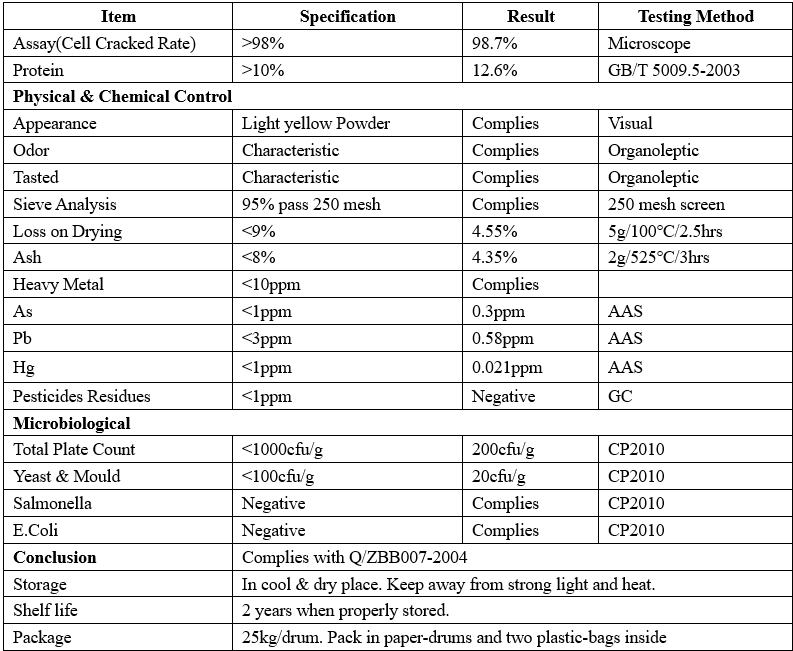
Related Reading on Pine Pollen Powder
Reference of Nutrition in Pine Pollen Powder
Pine pollen contains all the nutrients and bioactive substances found in pine trees, including various proteins, more than 20 amino acids (including 8 essential for the human body), 15 vitamins, over 30 mineral elements, 11% fat, nearly a hundred enzymes and coenzymes, as well as nucleic acids, unsaturated fatty acids, phospholipids, flavonoids, monosaccharides, polysaccharides, etc. The total amount reaches more than 200 kinds, and they can combine reasonably, it can fully supplement and balance the nutrients needed by the human body, earning it the reputation of “green gold”.

The nutritional components of pine pollen powder are not only diverse, but also very high in content. The protein and carbohydrate content of pine pollen powder is higher than that of bee pollen. Among them, the total protein content is 7-10 times that of beef and eggs; The crude fatty acid content is three times the average reported in Japanese bee pollen. Unsaturated fatty acids, which are beneficial for preventing and treating cardiovascular diseases, account for 72% of the total fatty acids 5%; higher amino acid content than the total amount of black fungus and lion’s mane mushroom; Iron is 20 times higher than spinach; Va prototype carotene is 20-30 times more abundant than carrots, and at the same time, vitamin C is 562 μg/g and vitamin E is 0 367 μg/g, with a vitamin B5 content of 240 μg/g. Pine pollen powder is an efficient, functional, and nutritious health food product.
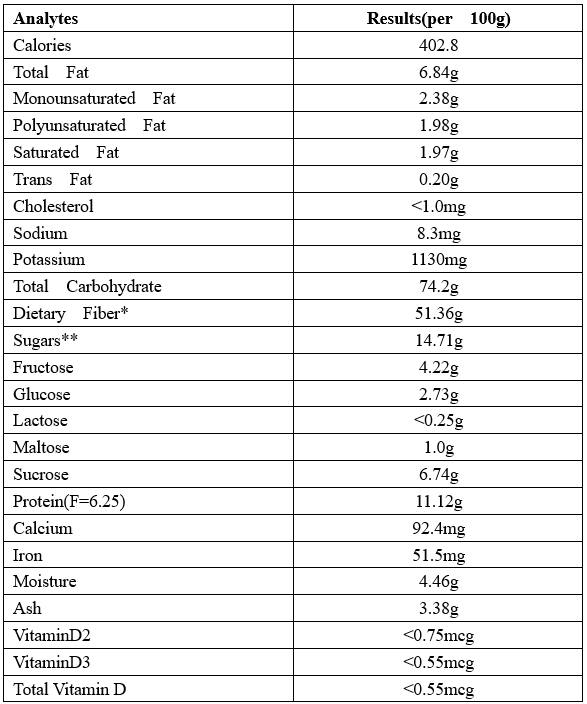
Reference of Mineral and Heavy Metals in Pine Pollen Powder

Yunnan pine pollen powder is less affected by industrial pollution
Geographical and climatic reasons
Yunnan Province is located on a plateau with complex terrain, which is not conducive to the development of large-scale industrial activities. For example, Yunnan is mountainous and has inconvenient transportation, which makes it difficult to implement large-scale industrial production and emissions. In addition, the climate conditions in Yunnan also contribute to reducing industrial pollution. The frequent occurrence of high temperatures, low rainfall, and stable weather systems makes it difficult for pollutants to spread, thereby reducing the impact of industrial emissions on the environment.
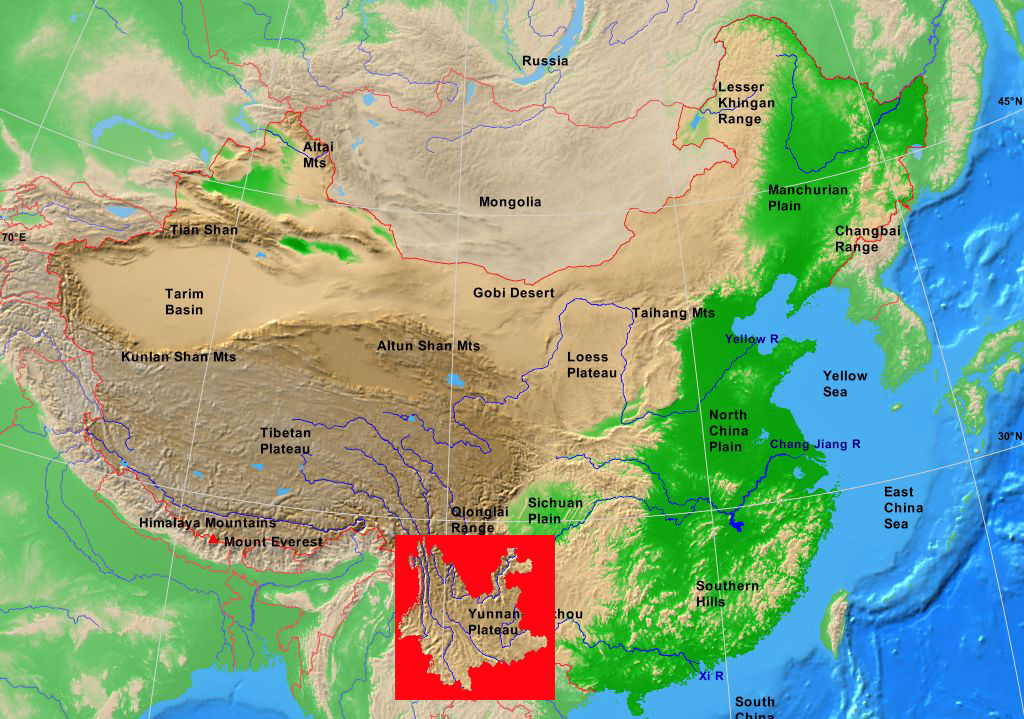 Yunnan Province is located on the southwestern border of China, between longitude 97 ° 31 ′ -106 ° 11 ′ E and latitude 21 ° 8 ′ -29 ° 15 ′ N. The Tropic of Cancer crosses the southern part of Yunnan Province and is a low latitude inland area. The maximum horizontal distance between east and west is 864.9 kilometers, and the maximum vertical distance between north and south is 990 kilometers. The terrain of Yunnan Province presents a northwest high and southeast low trend, gradually descending in a stepped manner from north to south. The average elevation per kilometer of horizontal straight-line distance from north to south decreases by 6 meters. The northern part is the southern extension of the Qinghai Tibet Plateau, with an altitude generally between 3000 and 4000 meters, alternating high mountains and canyons, and steep terrain; The southern part is the Hengduan Mountains, with an average elevation of less than 3000 meters. The terrain gradually descends to the south and southwest, and the river valley gradually widens; In the southern and southwestern borders, the terrain gradually becomes gentler, with shorter mountains and more wide valley basins, with elevations ranging from 800 to 1000 meters.
Yunnan Province is located on the southwestern border of China, between longitude 97 ° 31 ′ -106 ° 11 ′ E and latitude 21 ° 8 ′ -29 ° 15 ′ N. The Tropic of Cancer crosses the southern part of Yunnan Province and is a low latitude inland area. The maximum horizontal distance between east and west is 864.9 kilometers, and the maximum vertical distance between north and south is 990 kilometers. The terrain of Yunnan Province presents a northwest high and southeast low trend, gradually descending in a stepped manner from north to south. The average elevation per kilometer of horizontal straight-line distance from north to south decreases by 6 meters. The northern part is the southern extension of the Qinghai Tibet Plateau, with an altitude generally between 3000 and 4000 meters, alternating high mountains and canyons, and steep terrain; The southern part is the Hengduan Mountains, with an average elevation of less than 3000 meters. The terrain gradually descends to the south and southwest, and the river valley gradually widens; In the southern and southwestern borders, the terrain gradually becomes gentler, with shorter mountains and more wide valley basins, with elevations ranging from 800 to 1000 meters.
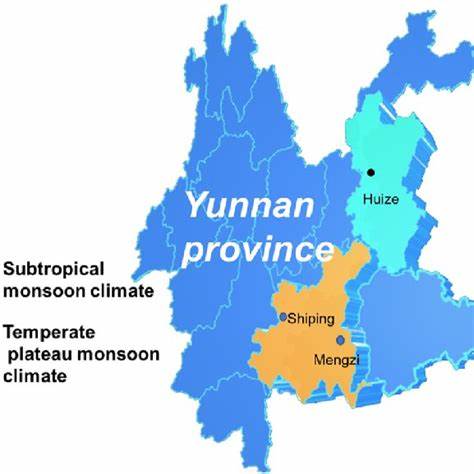 The climate in Yunnan Province basically belongs to the subtropical plateau monsoon type, with significant three-dimensional climate characteristics, numerous types, small annual temperature differences, large daily temperature differences, distinct dry and wet seasons, and abnormal vertical temperature changes with terrain height. This leads to Yunnan’s abundant plant resources, making it one of China’s key forest areas with a forest coverage rate of 24.9%. The total storage volume is 1.3 billion cubic meters, ranking the third in China after Heilongjiang and Xizang. The main tree species are coniferous forests, including Yunnan pine, Masson pine, Simao pine, spruce, fir, etc. The distribution is most concentrated in northwest Yunnan.
The climate in Yunnan Province basically belongs to the subtropical plateau monsoon type, with significant three-dimensional climate characteristics, numerous types, small annual temperature differences, large daily temperature differences, distinct dry and wet seasons, and abnormal vertical temperature changes with terrain height. This leads to Yunnan’s abundant plant resources, making it one of China’s key forest areas with a forest coverage rate of 24.9%. The total storage volume is 1.3 billion cubic meters, ranking the third in China after Heilongjiang and Xizang. The main tree species are coniferous forests, including Yunnan pine, Masson pine, Simao pine, spruce, fir, etc. The distribution is most concentrated in northwest Yunnan.
The complex terrain and special climatic conditions have constrained the development of Yunnan’s industry. Due to its remote location and inconvenient transportation, the logistics cost of industrial development is high, making it difficult to attract large-scale industrial projects to land. Many urban areas have not yet been connected to high-speed rail, which to some extent affects the industrial development potential of the region. This situation has effectively kept Yunnan’s abundant plant resources, including pine pollen, away from industrial pollution.
National policy orientation and industrial structure transfermation
Blue sky, white clouds, fresh air, and beautiful mountains and waters are the most distinctive labels of Yunnan Province. In terms of ecological protection, it is willing to sacrifice immediate benefits, growth rate, and GDP. The forest area ranks second in the country, and the urban air quality has been among the top in the country for seven consecutive years. In 2023, the average PM2.5 concentration was 21.8 micrograms per cubic meter, nearly 30% lower than the national average level. The “Animal Kingdom,” “Plant Kingdom,” “World Garden,” and “Species Gene Bank” are the most authentic portrayal of Yunnan, which comprehensively strengthens biodiversity protection. Higher plants, vertebrates, and large fungi account for more than 50% of the country’s total, making it one of the 36 biodiversity hotspots in the world. Ecological priority and green development are the most important responsibilities and missions of Yunnan Province. We should not make money or projects that cause pollution, and promote the comprehensive green transformation of economic and social development.
From historical data, the industrial structure of Yunnan Province has been adjusted in recent years. In 2023, the tertiary industry structure in Yunnan Province will be 14.0:34.2:51.8, indicating that the tertiary industry has the highest contribution rate to economic growth, reaching 68.2%. In the first half of 2024, the structure of the three industries will be further adjusted to 19.1:33.7:47.2, indicating that the tertiary industry still dominates. The total proportion of the primary and tertiary industries is over 60%, forming a green economy with tourism as the pillar industry and the development of characteristic agriculture as a supplement. This directly affects Yunnan’s industrial pollution, which is relatively smaller compared to other regions.
The Advantages and Features of Pine Pollen Powder as A Health Food
What is Health Food?
Health food is a special type of food. In China, health food is defined as food that is suitable for specific populations to consume, has the ability to regulate bodily functions, is not intended to treat diseases, and does not pose any acute, subacute, or chronic harm to the human body. Before being put on the market, health food must go through a strict and scientific evaluation process in accordance with the law, and its suitability for specific populations has theoretical basis; Its ability to regulate bodily functions is precise; The nature of its food also limits its purpose to not treating diseases. Both health food and general food can provide essential nutrients for human survival; All have specific color, aroma, and shape; However, health foods have specific functions due to their containing a certain amount of functional ingredients and ability to regulate human body functions. At the same time, they specify their specific consumption population, which is not present or emphasized in general foods.
The advantages and features of pine pollen powder
Safety of pine pollen powder
The consumption of pine pollen in China has a long history. As early as over 2000 years ago, there were many records of consuming pine pollen and using it for beauty purposes in China. The discussion about pollen cake in the Compendium of Materia Medica and the Dietary Catalogue of Suixi Ju states that “Add pine pollen when white sugar is boiled in water”. The method of making pollen wine in the “Yuanhe Lun Yong Jing” is unique: put 1 kilogram of of pine pollen powder in a silk sac, add 2.5 kilograms of wine, soak for 5 days, and drink three times on an empty stomach each time. In Su Dongpo’s “Pollen Song” in the Song Dynasty, it is written: “One Jin(half a kilo) of pine pollen is as the base, with eight liang(400 grams) of cattail pollen that is not stir-fried and five Qian(25 grams) each for locust flower pollen and apricot flower pollen, and then add two Jin(one kilogram) of white silkworms to mash together. Whether you eat or bathe, your red and white complexion will last until old.”
There are many records in the “Materia Medica” throughout history that pine pollen is “non-toxic,” which is the crystallization of thousands of years of practice by the Chinese people. In modern times, in order to evaluate the nutritional and physiological effects of pine pollen, Chinese nutrition experts have been conducting preliminary studies on the effects of pine pollen on zinc and lipid metabolism in growing rats at the Institute of Nutritional Physiology, Technical University of Munich, Germany since 1993. The results indicate that Songhua powder has high biological safety. In 1995, acute toxicity experiments, mutagenicity experiments, and subacute toxicity experiments on pine pollen further proved the view that pine pollen is non-toxic from the perspective of modern medicine in previous editions of “Materia Medica”. In 1985, pine pollen was officially included in the Pharmacopoeia of the People’s Republic of China and became a “traditional medicine”. Due to the long-term safety of consuming pine pollen, in 1997, it was recognized by the state as a “new resource food” due to its non toxicity and no side effects. In 1999, due to its broad-spectrum and safety, pine pollen was designated as a “food and health product” by the state.
The Record of Pine Pollen in the First Supplementary Edition of the “2020 Chinese Pharmacopoeia”
The product is from the pine family plant Pinus massoniana Lamb, Pinus tabuliformis Carr. or dried pollen from several species of the same genus. When the spring flowers first bloom, pick the flower spikes, dry them in the sun, collect pollen, and remove impurities.
【Appearance】This product is a light yellow fine powder. Light in weight, easy to fly, and feels smooth when twisted with fingers, with mild odor and light taste.
【Identification】This product has a light yellow powder. The pollen grains are elliptical in shape, measuring 45-55 μm in length and 29-40 μm in diameter. The surface is smooth, and there are swollen air sacs on each side, which have a distinct mesh texture and a polygonal mesh.【Inspection】The moisture content should not exceed 13.0% (General Rule 0832, Method 2). The total ash content shall not exceed 8.0% (General Rule 2302).
【Tnature, flavor and channel tropism】The taste is sweet and the nature is warm, goes to the liver and spleen meridians in traditional Chinese medicine.
【Functions and Indications】Converge and stop bleeding, dry dampness and astringe sores. Used for external bleeding, eczema, yellow water sores, skin erosion, and pus dripping.
【Usage and Dosage】Apply an appropriate amount topically and sprinkle on the affected area.
【Storage】Store in a dry place and keep away from moisture.
Nutritional value of pine pollen powder
Pine pollen powder is the reproductive cell of pine trees, which gathers a large amount of life elements and rich nutrients, and the ratio is balanced and reasonable. Pine pollen contains over 200 types of nutrients from ten major categories.
Amino acid
Pine pollen contains abundant protein, with a protein content ranging from 9% to 16%. Pine pollen contains 18 types of amino acids, with a total amino acid content of 6.6% to 9.47%, including histidine, leucine, threonine, tryptophan, cysteine, methionine, phenylalanine, arginine, isoleucine, valine, glycine, tyrosine, alanine, glutamic acid, proline, aspartic acid, lysine, etc. All 8 essential amino acids for the human body are present.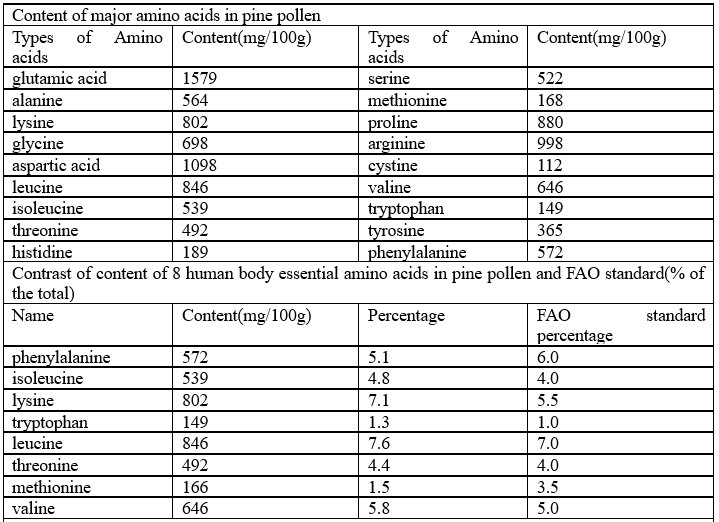
carbohydrate
The total carbohydrates in pine pollen are about 26% to 35%, and the content of pine pollen varies among different varieties. The main carbohydrates include: gum, starch, polysaccharides, total sugars (including sucrose, glucose, fructose), reducing sugars, etc.
The polysaccharide content in pine pollen ranges from 1.2% to 2.5%, and varies among different varieties. Polysaccharides have become one of the hot topics in research both domestically and internationally in recent years. Polysaccharides are immune enhancers that can not only treat immunodeficiency diseases in the body, but also treat autoimmune diseases such as rheumatism.
lipid
Pine pollen contains phospholipids, hemolytic phospholipids, phosphatidylcholine, free fatty acids, hydrocarbons, among which fatty acids include palmitic acid, linolenic acid, oleic acid, linoleic acid, eicosaenoic acid, erucic acid, and a small amount of tetradecanoic acid.
Pine pollen contains abundant phospholipids, with a phospholipid content of around 4.5% in Pinus tabulaeformis pollen. The molecules of phospholipids look like a complex formed by the twisting of fats and phosphatidic acids. This biochemical ‘chimera’ can maintain the relative independence of various cells in the human body, as the components of the cell membrane are phospholipids. Without it, cells will be helpless against the constant influx of substances into and out of them, and in severe cases, it may even lead to cell death. Liver cells are particularly sensitive to this because they have the main “function” of harmless treatment of toxic substances in the human body. Phospholipids are also active participants in biochemical reactions, and can regulate the metabolism of fat, protein and carbohydrate, and prevent atherosclerosis, obesity and many other diseases. In addition, it can protect the liver, promote the generation of liver cells, and effectively remove excess fat from liver cells.
Phosphatidylcholine can promote brain development and enhance memory. The US Food and Drug Administration (FDA) has mandated that all infant diets should include moderate supplementation of phospholipids. Unfortunately, substances rich in phospholipids seem to have been “mildly contaminated” today, such as eggs, meat, and animal liver, with high levels of cholesterol and harmful fats.
Vitamins
Pine pollen contains vitamin A, vitamin B groups (B1, B2, B5, B6), vitamin C, vitamin D, vitamin E, vitamin P, as well as pantothenic acid, folate, niacin, niacin, choline, etc. The choline content in pine pollen reaches 202.94~267.79mg/100g. Choline plays an important physiological role as a methyl donor in food and a precursor to the human neurotransmitter acetylcholine.
Active enzyme
Pollen contains a large number of enzymes, making it one of the top foods. According to research by Wang Kaifa and others, there are 104 types of enzymes found in pollen, such as convertase, amylase, oxidoreductase, phosphatase, catalytic enzyme, oxidase, glutamate dehydrogenase, alkaline phosphatase, lactate dehydrogenase, catalase, superoxide dismutase, coenzyme, etc.
Constant and trace elements
Pine pollen contains over 30 mineral elements, including potassium, calcium, sodium, magnesium, phosphorus, sulfur, silicon, and chlorine, as well as various trace elements such as copper, iron, lead, manganese, zinc, titanium, iodine, cobalt, selenium, molybdenum, strontium, nickel, boron, barium, beryllium, arsenic, etc. A total of 28 elements have been found in the human body, of which 14 have extremely low levels and are called trace elements. However, pine pollen contains all 28 elements that the human body needs.
Flavonoids
Pine pollen contains flavonols, quercetin, kaempferol, yangmei flavonoids, luteolin, isorhamnetin, proanthocyanidins, dihydrokaempferol, naringin, and apigenin. The total flavonoid content in Pinus massoniana pollen is about 600mg/100g.
Carotenoids
Pine pollen contains alpha carotene, beta carotene, gamma carotene, delta carotene, new beta carotene, hydroxy alpha carotene, cryptoflavon-5,6 epoxides, anthocyanins, lutein esters, epoxyalpha carotene, carotenoids, etc.
Nucleic acid
Each 100g of pine pollen contains about 200mg of nucleic acid, which is a natural health food for supplementing nucleic acid.
Auxin
Pollen contains six major plant growth regulators, including auxin, gibberellins, cytokinins, brassinosteroids, ethylene, and growth inhibitors, as well as growth hormones and antibiotics.
Pine pollen also contains numerous other types of components, which precisely contain many factors with special effects. It is not difficult to see from the above 10 categories and over 200 types of nutrients that pine pollen, as a single pure natural substance, contains a large number of nutrients that are rare among known natural products. Secondly, the content and ratio of its various components are most in line with the needs of the human body. For example, in general food, the sodium content is often greater than the potassium content, causing an imbalance in the potassium to sodium ratio in the human body. However, the potassium to sodium ratio in pine pollen is the opposite, with potassium content greater than sodium content. Pine pollen precisely compensates for the deficiency of potassium to sodium imbalance in other foods.
Functionality of pine pollen powder
The weight loss function of pine pollen powder
The lightweight effect of pine pollen has long been discussed in historical books. The Han Dynasty’s “Shennong’s Materia Medica” records that “(pine pollen) has a sweet and non-toxic odor, and is mainly used to treat cold and hot evil qi in the heart and abdomen, promote urination, eliminate blood stasis, take it for a long time to lighten the body and improve strength, and prolong life”. The Tang Dynasty’s “Newly Revised Materia Medica” records that “Pine flower pollen powder is the same as pine yellow, and when brushed, it looks like Pu Huang. If taken for a long time, it can lighten the body and treat diseases better than pine bark, pine leaves, and colophonium.
Modern clinical research has found that long-term use of pine pollen can control weight, which is consistent with the ancient medical scripture’s record of “long-term use for mild health treatment”. Researcher Zhao Lin found in repeated animal experiments on rats that their body weight was physiologically controlled to varying degrees when they were fed with feed supplemented with 2% to 6% pine pollen. This is related to the ability of pine pollen to reduce the absorption of lipid compounds. The completed animal experiments have shown that pine pollen has a good effect on lipid metabolism in the body. Experiments using pigs have shown that consuming feed containing pine pollen increases the excretion of triglycerides in pig feces by about 2 times and cholesterol excretion by about 0.8 times. The excretion of more than ten types of fatty acids from carbon-12 to carbon-22 has also increased significantly, with the highest increase being about 7 times.
Research on the human consumption of pine pollen has shown that consuming a small amount of pine pollen can supplement nutrients and increase satiety. Its magical effect of limiting energy intake and anti mutation properties are attributed to the high-quality nutrients in pine pollen.
The anti-aging function of pine pollen powder
Pine pollen has had a dietary function of prolonging life since ancient times. The Han Dynasty’s “Shen Nong’s Herbal Classic” records that “Pine pollen has a sweet and neutral odor, is non-toxic, and can be taken for a long time. It is light and beneficial to the body, and can prolong life. The main mechanism of anti-aging is to enhance the vitality of body cells and rejuvenate aging cells.
Pine pollen contains nucleic acids, which are stored in the form of nucleoprotein, which is the foundation of life. When the synthesis of nucleic acids and proteins in the human body is restricted, the cell renewal rate decreases, and the number of aging cells gradually increases, the person gradually ages. To maintain youthfulness, it is necessary to supplement a certain amount of nucleic acid, but excessive nucleic acid in the human body can easily cause gout disease. Therefore, the amount of nucleic acid supplemented to the human body must be just right. Each 100g of pine pollen contains about 200mg of nucleic acid, and the ratio of various nutrients is reasonable, making it a natural health food for supplementing nucleic acid.
Pine pollen contains catalase and peroxidase, as well as abundant reducing substances. The human body can produce H2O2 at any time and can normally eliminate H2O2 at any time, maintaining a normal balance. Once H2O 2 is eliminated, its ability decreases, and it can oxidize lipids on the cell membrane to convert them into lipid peroxides (LPO), causing damage to the cell membrane and forming senile plaques. Age spots are not only manifested on the skin, but also widely present in various organs such as the brain and internal organs. The catalase, peroxidase, and reducing substances in pollen can eliminate excessive H2O 2 in the body, prevent LPO production, and inhibit the formation of senile plaques.
With aging, poor teeth, decreased digestion, and reduced intake, the body gradually enters a state of malnutrition, showing a series of aging symptoms. Pine pollen is a concentrated nutritional supplement that can be taken for a long time and has certain anti-aging significance for the elderly. Moreover, the nutrients in pollen are evenly distributed and will not cause excessive intake of any particular nutrient, which could lead to age-related diseases. This is also another important role of Songhua powder in anti-aging.
The moisturizing and laxative function of pine pollen powder
Constipation is mainly caused by weakened intestinal activity. Pine pollen is used clinically to treat constipation, but it also has therapeutic effects on certain types of diarrhea, loose stools, and intestinal dysfunction, with a bidirectional regulatory function.
Pine pollen has a dual regulatory effect on intestinal function, with no side effects, and is also very nutritious. Firstly, the coarse fibers in pine pollen can promote gastrointestinal peristalsis, aid digestion and absorption, and alleviate intestinal obstruction. Secondly, the vitamin B6 and trace element magnesium in pine pollen can alleviate constipation caused by nerve tension, as magnesium has a good calming effect, thereby relieving constipation caused by nerve tension. Dysfunction of the gallbladder and insufficient secretion of choline are another cause of constipation, as choline is an effective substance in preventing calcium iron binding sclerosis. The extract of broken wall pine pollen can enhance intestinal activity, possibly due to the water-soluble choline in broken wall pine pollen, which forms acetylcholine with acetyl CoA under the catalysis of acetylcholine synthase. It is a neurotransmitter that stimulates smooth muscle activity. The raw materials and their synthetic enzymes for synthesizing acetylcholine in pine pollen are very abundant.
Immune regulation and anti-tumor function of pine pollen powder
Pine pollen contains abundant beta carotene (vitamin A precursor). β – carotene can be degraded into two molecules of vitamin A (retinol, retinal, and retinoic acid) by intestinal wall or liver enzymes when entering the human body. Among them, the anti-cancer effect of retinoic acid is widely studied, and its anti-cancer mechanism is mainly to protect the continuous repair and renewal of normal cell membrane outer oligosaccharide chains, preventing physical, chemical, and biological carcinogens from entering cells and causing cancer.
Pine pollen contains abundant polysaccharides. Studies have shown that polysaccharides isolated from natural products are often immune modulators that can activate immune cells, improve immune function, and have no toxic side effects on normal cells. Polysaccharides as immunotherapy drugs are receiving increasing attention and have become one of the hotspots in new drug research.
The beauty and skincare effects of pine pollen first appeared in Zhang Qin’s “Zhuang Lou JI” and Liu Xun’s “Ling Biao Lu” in the Tang Dynasty, both of which recorded the existence of a “beauty well” at the foot of Shuangjiao Mountain in Baizhou during the Jin Dynasty. Every woman who drank this well water was naturally beautiful. The secret lies in the pine trees growing around the wells. At the end of spring every year, pine pollen falls into the wells. Over the years, a lot of pine pollen accumulates in the wells. Drinking this water regularly can make one’s appearance beautiful. Meng Qiao of the Tang Dynasty exclaimed in his book “Dietary Therapy Materia Medica”: “If taken for a long time, the face looks like flowers, and it is very expensive in immortal formulas.
Pollen contains a variety of nutrients, which are the material basis for human beauty. Pollen also contains fatty acids and aromatic substances, which have a protective effect on the skin. Pine pollen can effectively regulate the endocrine system of the human body. Long term consumption of pine pollen can make the skin white and wrinkle free.
The effect of pine pollen powder on inhibiting prostate hyperplasia
The prostate gland is the accessory gland of males, and the prostatic fluid secreted by it is an important component of semen. The prostate gland is shaped like a chestnut and is located below the bladder, through which the urethra passes. Benign prostatic hyperplasia (enlargement) is a common disease unique to the elderly. Pollen is one of the effective drugs for treating prostate hyperplasia, and its pharmacological research has been detailed and in-depth.
To observe the therapeutic effect and mechanism of pine pollen on prostate hyperplasia, Cong Tao et al. conducted a study on the therapeutic effect of pine pollen on prostate hyperplasia in rats. The results showed that pine pollen can not only regulate the levels of estrogen and androgen in the body, but also exert a therapeutic effect on prostate hyperplasia. At the same time, its active ingredients can selectively inhibit through non hormonal pathways at the cellular level. Western medicine believes that the pathogenesis of benign prostatic hyperplasia is mainly due to the imbalance of hormone ratios in the male body, which leads to excessive conversion of testosterone into dihydrotestosterone. The latter directly acts on the prostate, causing it to enlarge and block the urethra, affecting urine excretion. Pine pollen can exert the biological effect of inhibiting dihydrotestosterone and regulating the function of bladder and urethral smooth muscle. The treatment of benign prostatic hyperplasia must start with tonifying kidney yang. Pine pollen can help weak Yuan yang, promote the rise and fall of vitality, and vaporize fluids to facilitate urination. From the perspective of traditional Chinese medicine, pine pollen plays a role in warming yang and promoting diuresis to inhibit prostate hyperplasia.
The function of pine pollen in enhancing sexual function
Pine pollen has the effects of strengthening the body, increasing energy, and improving sexual performance. Chen Li et al. studied the effect of pine pollen on sperm activity in aging rats: a subacute aging model was induced in SD rats by intraperitoneal injection of D-galactose, and pine pollen was administered to delay aging at doses of 350 mg/kg (low-dose group) and 700 mg/kg (high-dose group), respectively, by gavage for 50 consecutive days; Collect sperm from the epididymis and observe the sperm count, motility, and survival rate. The experimental results show that both doses have significant effects. Both high and low doses of pine pollen can significantly increase the sperm count, motility, and survival rate of aging rats, and have an anti-aging effect on testicular reproductive function. The mechanism of aging may be achieved by enhancing the activity of telomerase in testicular germ cells, thereby delaying cellular aging.

The liver protective function of pine pollen powder
The liver is an important organ in the human body, participating in almost all processes in the body and serving as the center of material metabolism. Liver disease is one of the common diseases. Pollen can significantly enhance the vitality and phagocytic ability of peripheral blood T cells, improve the immune function of the human body, and indirectly play a role in killing hepatitis virus. Pine pollen can also provide a large amount of nutrients and trace elements to protect the metabolic balance of the liver. Pine pollen contains abundant phospholipids, which can protect liver cells, promote liver cell production, and effectively remove excess fat from liver cells.
In recent years, the incidence of liver injury caused by alcohol consumption has significantly increased. In order to find effective liver protection and health products, Liu Xie et al. conducted a study on the protective effect of pine pollen on acute alcoholic liver injury in mice. By observing the effects of pine pollen on lipid peroxidation damage and hepatic cell steatosis in experimental animals with acute alcoholic liver injury, the protective effect and mechanism of pine pollen on acute alcoholic liver injury were analyzed. The experimental results indicate that pine pollen has a significant protective effect on acute alcoholic liver injury, and its mechanism of action may be related to the abundant antioxidant substances in pine pollen. These substances can alleviate lipid peroxidation damage to the liver caused by alcohol, enhance the metabolism of fatty acids in liver cells, and reduce fat deposition in liver cells.
Other benefits of pine pollen powder
Pine pollen can provide sufficient nutritional materials for the development and physiological activities of brain cells, thereby activating brain cells, improving brain cell function, enhancing memory, and balancing excitement. The components such as rutin (VP) and flavonoids in pine pollen can enhance the strength of capillary walls and prevent cardiovascular and cerebrovascular diseases. Pine pollen also has good lipid-lowering and hypoglycemic functions.
Pine pollen is the germ cell of pine stamens, which gathers a large amount of nutrients and has many active functional ingredients. The reasonable ratio of various ingredients has unique health benefits for the human body. From the nutritional physiology research of pine pollen, it can be seen that the therapeutic effect of food is the synergistic effect of various nutrients and bioactive substances, which cannot be replaced or interpreted by one or several functional factors described in the development concept of Western functional foods.
Resource advantages and characteristics of pine pollen powder in China
The third volume of “Chinese Higher Plants” records that there are about 110 species of pine family plants belonging to the same genus as Pinus massoniana and Pinus tabulaeformis, distributed in Europe, Asia, North America, and northern Africa. There are 22 species and 16 varieties native to China, with about 14 species introduced and cultivated, distributed several times throughout the country. Pinus tabulaeformis, Pinus massonia, Pinus koraiens, Pinus armandi, Pinusbungeana),Pinus densiflora, Pinus sylvestris, Pinus taiwanensis, Pinus yunnanensis , Pinus tunnanensis, Pinus kesiya) and other trees are native to China and belong to local trees in China. Black pine is native to the eastern coastal areas of Japan and South Korea, and has been extensively introduced and cultivated in Liaoning, Hebei, Henan, Shandong, Jiangsu, Zhejiang, Jiangxi, and Hubei provinces in China.
China has abundant pine tree resources. According to statistics from the Ministry of Forestry in 1995, the area of pine plants accounted for 60% of China’s national green space. The planting areas of Pinus massoniana in the south and Pinus tabulae formula in the north were each about 20 million hectares, with an annual growth of tens of thousands of hectares. The total amount of pollen is calculated based on collecting 1.5-5kg (average 3kg) of dry powder per acre per year. China’s resource reserves are approximately 1.8 million tons, and it is a sustainable and renewable resource. Pine trees are fast-growing species, with a flowering period of 3 years and a peak flowering period of 5-8 years. In this sense, there is no natural product resource in the world that can compare to the resources of pine pollen.
